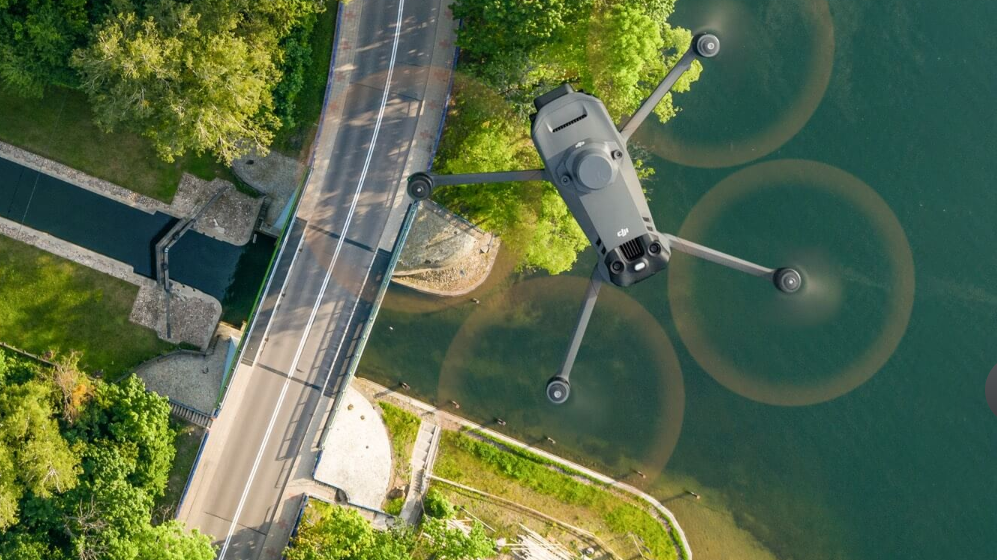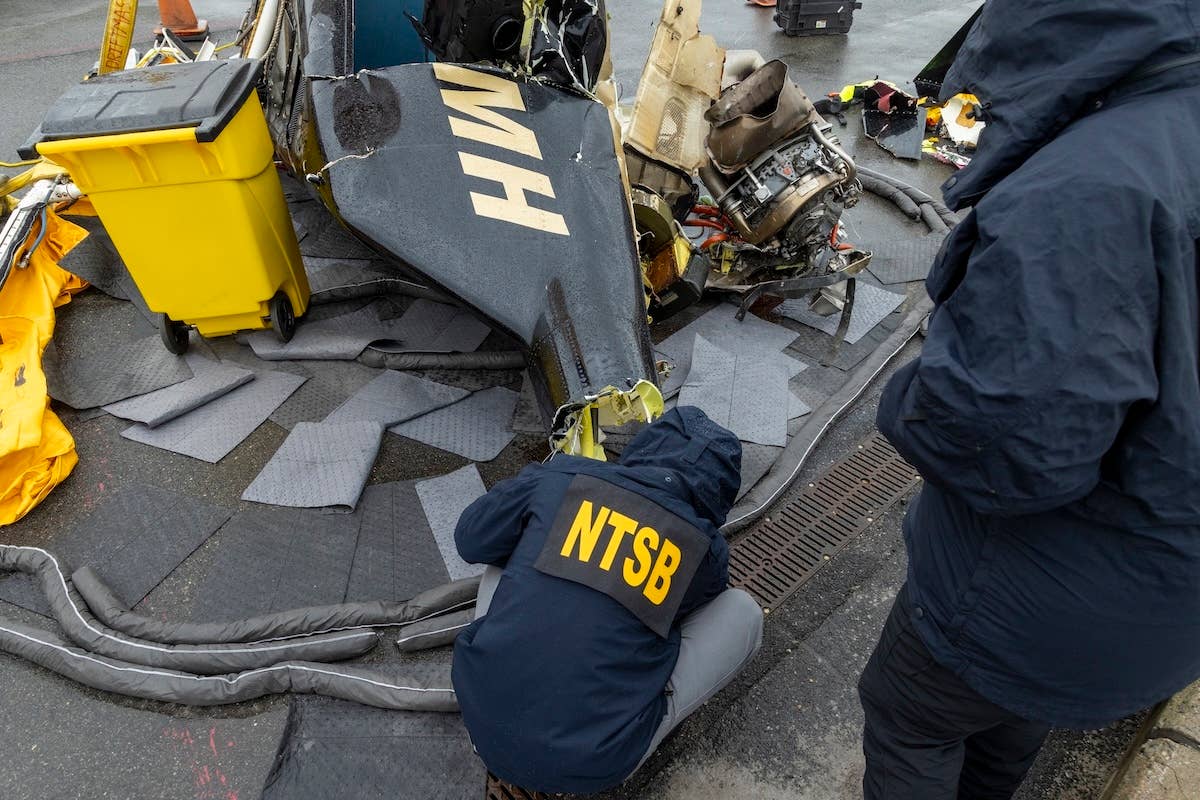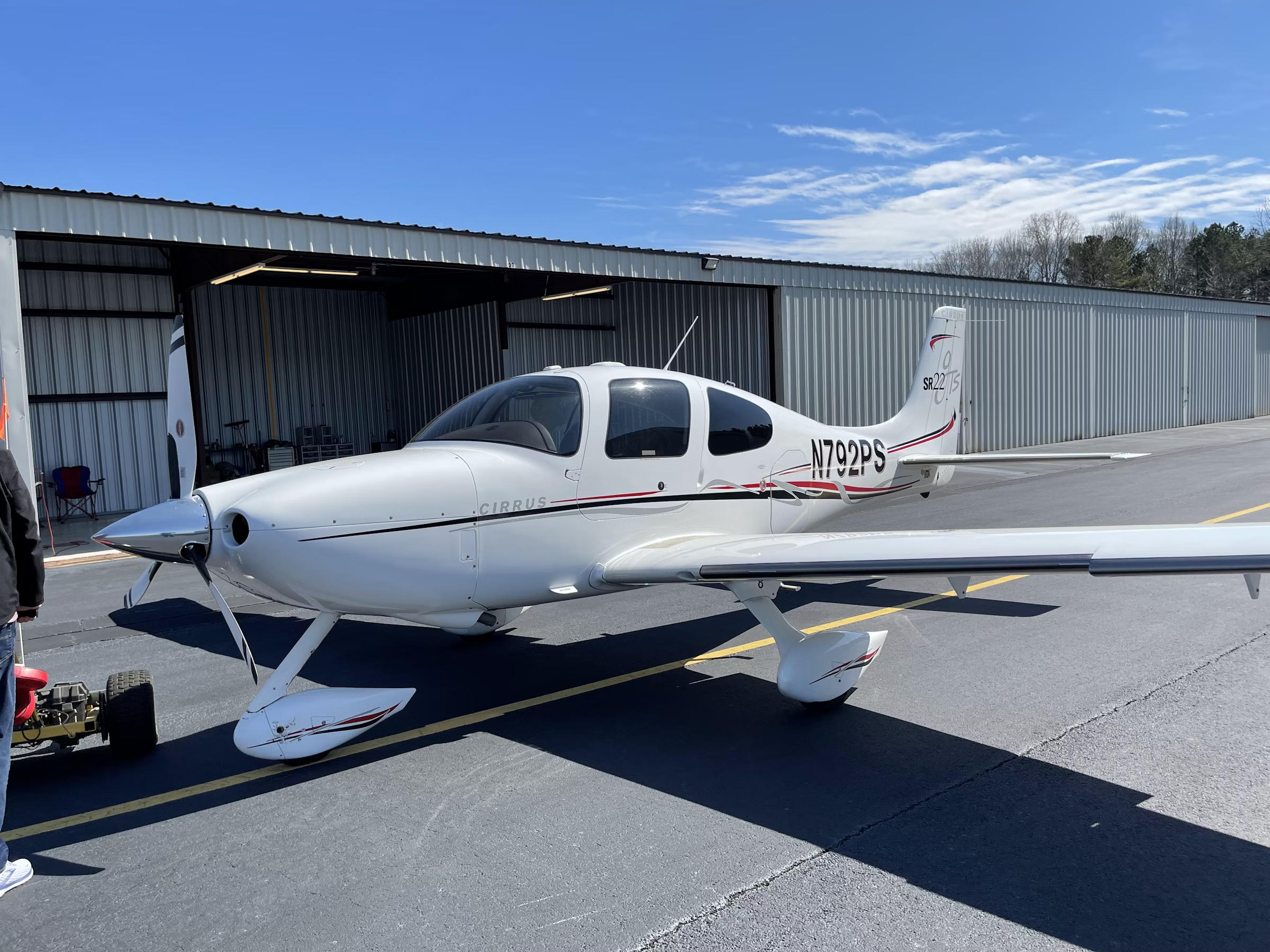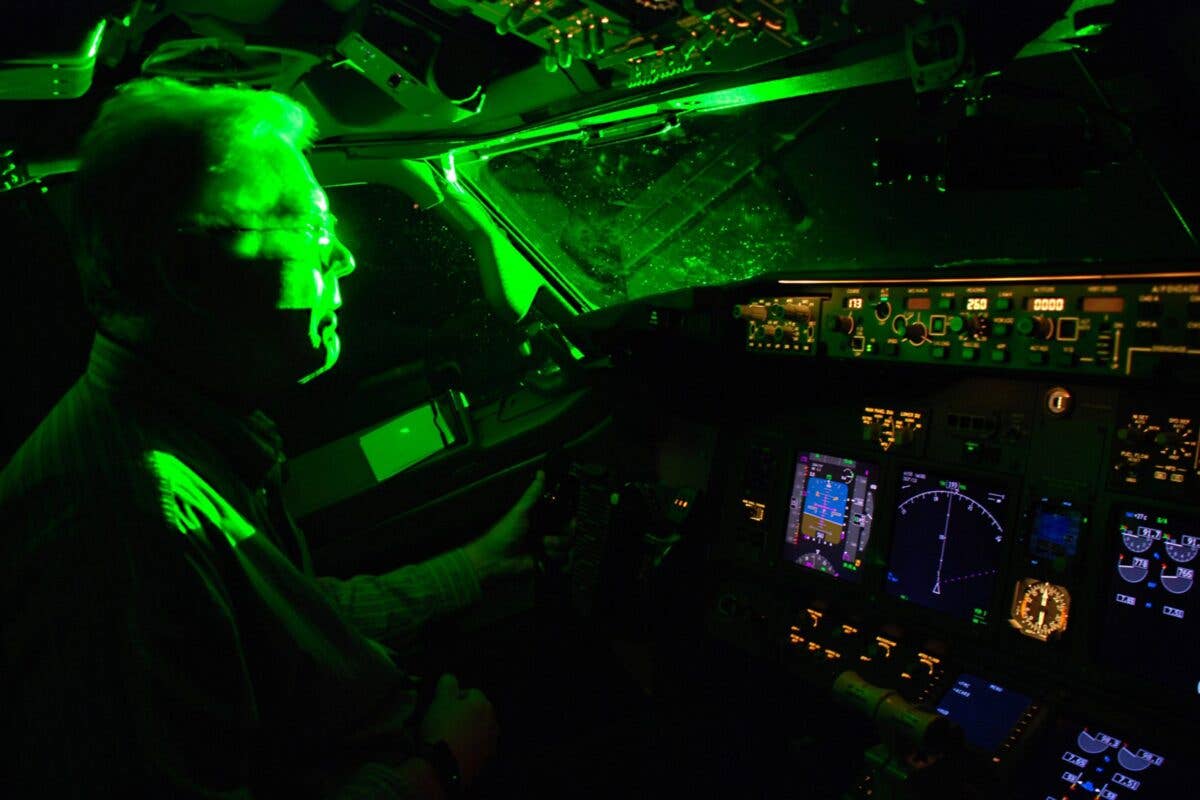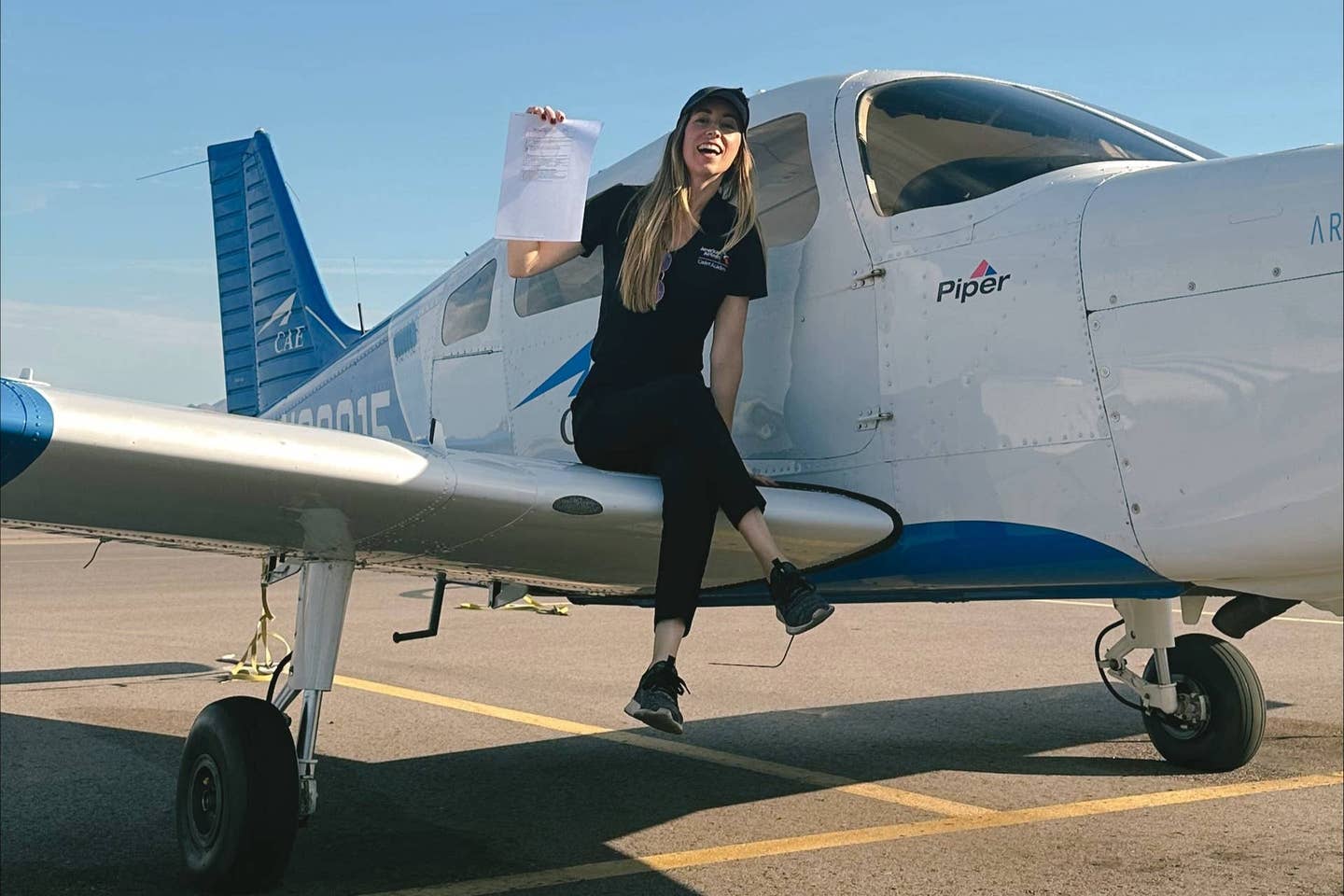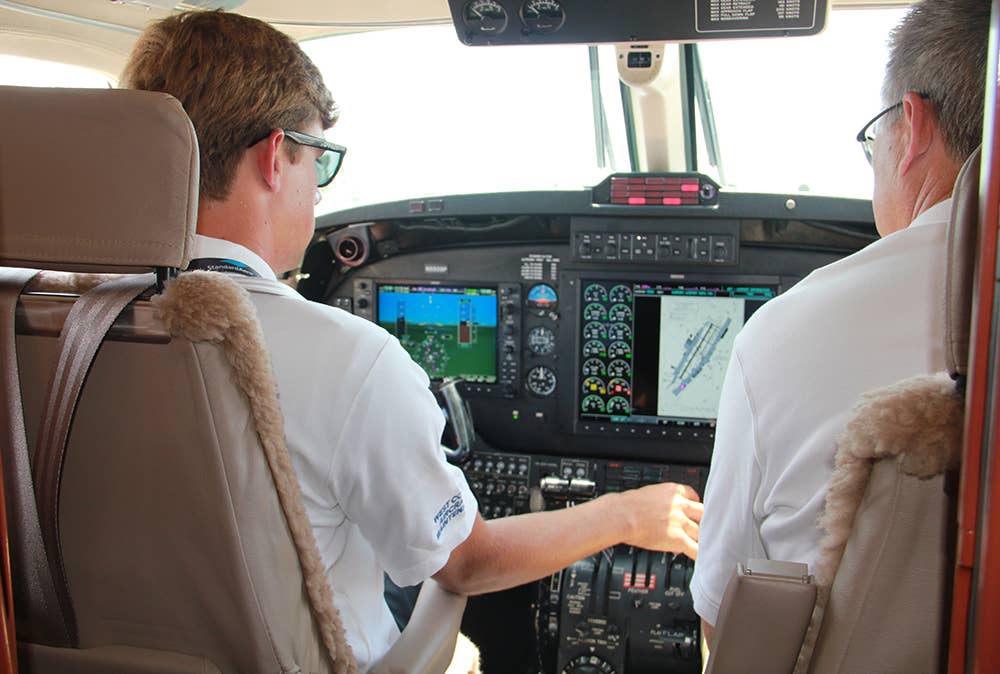Honeywell and Electra Agree to Supplier, Investment Deal
In addition to supplying components for Electra’s hybrid-electric short takeoff and landing (eSTOL) design, Honeywell makes an undisclosed investment.

Representatives from Honeywell and Electra agreed on a deal at the Farnborough International Airshow in the U.K. [Courtesy: Honeywell]
On Wednesday at the Farnborough International Airshow in the U.K., hybrid-electric short takeoff and landing (eSTOL) aircraft manufacturer Electra added Honeywell as a supplier—and investor.
Electra picked Honeywell to provide the flight control computers and electromechanical actuators for its nine-passenger eSTOL design. In addition, Honeywell said it made a “strategic financial investment” in Electra, the value of which was not disclosed.
“Our ability to preintegrate multiple subsystems will not only help reduce the time it takes to install and integrate these technologies, but it will also enable Electra to expedite and streamline production of its groundbreaking eSTOL aircraft,” said Dave Shilliday, president of Honeywell Aerospace Technologies’ advanced air mobility (AAM) arm.
The company’s AAM business has racked up $10 billion worth of contracts and added customers such as Lilium, Boom Supersonic, and Heart Aerospace.
Electra’s flagship model makes use of a unique blown lift propulsion system, which redirects airflows downward to enable takeoffs at neighborhood driving speeds. The hybrid-electric design is expected to require just 150 feet of runway, with no electric chargers necessary. The manufacturer seeks to achieve certification under FAA Part 23 regulations by 2028.
Honeywell’s compact fly-by-wire flight control computer, which it describes as the “brains” of the aircraft, will be a key piece of Electra’s full-scale model. It is a fraction of the size and weight of typical computers on larger aircraft, the company says, drawing less power by comparison. The technology is intended to reduce turbulence by dynamically adjusting the eSTOL’s electric motors, replacing hydraulics and control cables.
The electromechanical actuators are similarly light and compact despite having 10 percent greater power density than most other actuators on the market, by Honeywell’s estimate. These take electronic commands from the pilot or onboard flight system, convert them to mechanical force, and use it to move control surfaces such as flaps.
The agreement to supply the two components was accompanied by an undisclosed investment from Honeywell Ventures, the firm’s venture capital arm.
“The investment supports collaboration between the two companies, reinforcing Honeywell’s commitment to advanced air mobility and the future of sustainable flight,” Honeywell said Wednesday.
Like this story? We think you'll also like the Future of FLYING newsletter sent every Thursday afternoon. Sign up now.

Sign-up for newsletters & special offers!
Get the latest FLYING stories & special offers delivered directly to your inbox

